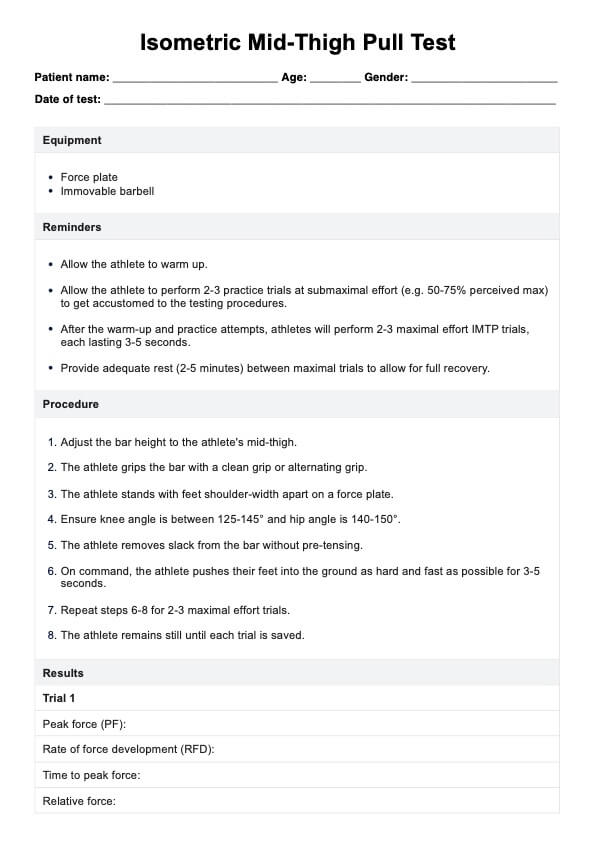To perform the isometric mid-thigh pull test, the athlete stands on a force plate with an immovable bar set at mid-thigh height. The athlete then pulls against the bar with maximum effort for 3-5 seconds.

Isometric Mid Thigh Pull Test
Learn about the Isometric Mid-Thigh Pull Test, its importance, and how to perform it. Use our template for accurate assessment and data analysis.
Use Template
Isometric Mid Thigh Pull Test Template
Commonly asked questions
The knee angle for the isometric mid-thigh pull should be between 125-145° to ensure proper positioning and accurate results.
Improving mid-thigh pull strength involves regular strength training exercises, focusing on lower body and core muscles, and consistent practice of the IMTP to enhance technique and force production.
EHR and practice management software
Get started for free
*No credit card required
Free
$0/usd
Unlimited clients
Telehealth
1GB of storage
Client portal text
Automated billing and online payments











